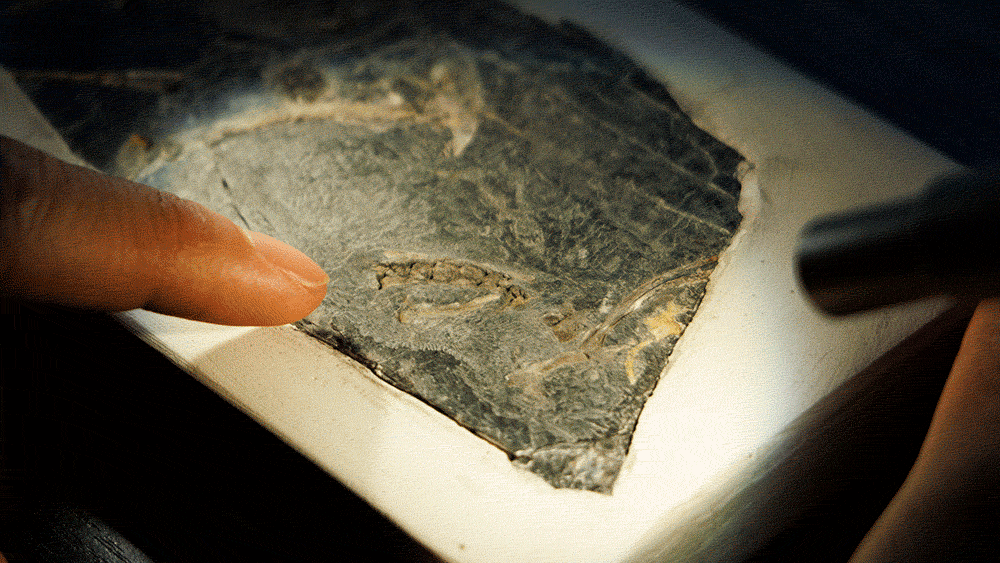
Mars Attracts: Chinese Probe Seeks Answers to ‘Heavenly Questions’
China has launched its first independent Mars exploration mission.
A Long March 5 carrier rocket destined for the red planet blasted off Thursday from the Wenchang Space Launch Center in the southern Hainan province. If all goes according to plan, China will become the third country to land on Mars, after the U.S. and the Soviet Union.
The mission — dubbed Tianwen-1, or “heavenly questions” — was named after a poem by the ancient Chinese poet and politician Qu Yuan (340-278 BC). According to the state-run Xinhua News Agency, the name is said to “express the nation’s perseverance in pursuing truth and science.”

Tianwen-1 is an ambitious attempt by China to orbit, land, and rove on Mars, all on the first try. The craft is expected to enter Mars’ orbit in seven months; then the lander and rover will detach and touch down on the planet’s surface two to three months later. The rover will be active for around 90 Martian days (92 Earth days) and carry out various scientific tasks, according to an article astronomers from the Chinese Academy of Sciences published in Nature.
Meanwhile, the orbiter will remain in the atmosphere, circling the planet for around an entire Martian year (687 Earth days). During this time, it will relay signals to the lander and rover below, as well as collect additional scientific data.
Compared with launching from Earth, landing on Mars will be a more daunting task. The average distance between the two planets is 225 million kilometers, and it could take a signal over 20 minutes to travel such a great distance. The lander will therefore have to perform its function virtually autonomously.

In 2011, China attempted to get a closer look at Mars by sending a probe into space along with Russia’s Phobos-Grunt mission. But the Russian spacecraft malfunctioned en route and burned up in the Earth’s atmosphere, disintegrating over the Pacific Ocean.
Tianwen-1 is one of three Mars missions scheduled for this year. The United Arab Emirates launched its first Mars orbiter Sunday, and NASA has said it plans to send its Perseverance rover into space in late July or August.
The high traffic to Mars is due to an optimal launch window that only comes around every 26 months. For a few fleeting weeks, Earth and Mars are relatively close, and rockets can reach the red planet using the least amount of fuel.
“You have to meticulously plan the trajectory of your rocket,” Hou Xiyun, an astronomer at Nanjing University, told Sixth Tone. “Both planets are moving, and the spacecraft needs to fly to a spot where Mars is able to ‘catch’ it.”
Going to Mars is a giant technological leap from lunar projects, according to Hou, who is not directly involved with the Tianwen-1 mission. The distance between Earth and Mars is at least 150 times greater than from Earth to the moon, and as such it requires more advanced communications and data transmission technology, for example.

Astronomers have been eager to understand Mars, as its past and future may provide clues about the destiny of Earth and humankind.
Although Mars today is a frigid desert, cumulative evidence suggests that it once had water, raising the possibility that the planet could have hosted life.
“The similarities between Mars and Earth make us wonder whether the ‘demise’ of Mars could be the future of Earth,” Li Geng, an astronomer at the National Astronomical Observatory in Beijing, told Sixth Tone.
Still, Mars remains the most habitable planet in our solar system after Earth. Scientists have discovered slabs of underground ice on Mars and detected several elements crucial for sustaining life, such as hydrogen and oxygen.
“If we ever need to move on from Earth, Mars could be a possible colony,” Hou said.

Tianwen-1 is loaded with 13 scientific instruments. The orbiter carries seven tools such as cameras, a magnetic field meter, and an energy particle detector. The rover, meanwhile, will carry the other six instruments, which include a ground-penetrating radar and a meteorological monitor.
“Scientifically, Tianwen-1 is the most comprehensive mission to investigate the Martian morphology, geology, mineralogy, space environment, and soil and water-ice distribution,” wrote the authors of the Nature article.
All excitement aside, however, Mars doesn’t have the most sterling reputation in China.
Though the planet’s English name comes from the Roman god of war, in ancient Chinese it was called yinghuo, or “glowing bewilderment.” To the naked eye, Mars has an uncommon trajectory: Every once in a while, it appears to slow and reverse its course.
“Mars was an ominous sign in ancient China,” said Li, who studies archaeoastronomy. “It would act unpredictable to people back then, and it appears red to our eyes, which is inauspicious in ancient Chinese culture.

China has set a goal of bringing samples back from Mars by 2030 — a feat no country has accomplished. The key to a return project, according to Li, is an extra-powerful rocket with an enormous payload capacity.
The country’s space program is currently developing its next-generation Long March 9 rocket, capable of carrying five times more weight than the Tianwen-1 mission’s Long March 5. Chinese scientists are also aiming for a crewed lunar landing by 2030 with a Long March 9 rocket.
“Astronomy is a field that really needs international collaboration,” Li said. “Politics, economy, history, and civilization — everything we care so much about right now is trivial in the context of the universe. No matter how powerful a country is, you only see half of the sun.”
Editor: David Paulk.
(Icons: Iconscout/People Visual)
(Header image: People watch the launch of China’s Tianwen-1 Mars mission at the Wenchang Space Launch Center in Hainan province, July 23, 2020. Meng Zhongde/People Visual)














